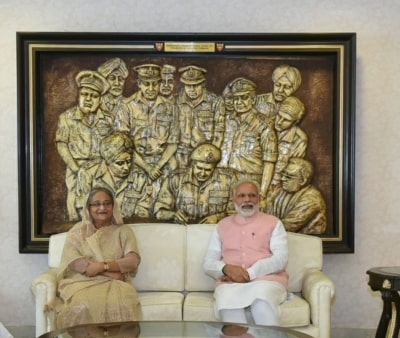India and Bangladesh, which have already begun work on the proposed economic agreement, are almost ready with the first draft outlining the contours. Sources from both sides said that the neighbours are keen on sealing the comprehensive economic partnership agreement (CEPA) – a kind of a free trade deal– by the financial year end in the wake of the Covid 19 pandemic. A review of the draft proposals will be held soon by the respective countries after which negotiations will start.
While the Economist Intelligence Unit — the research and analysis division of Economist Group had earlier said that the deal is expected to be signed in the next five years, sources pointed out that work has progressed much faster than anticipated. The EIU said that the economic agreement will preserve trade privileges for Bangladesh once it graduates from the UN's least developed country status in 2026.
“I will not be surprised it the deal is signed by the year-end. Things are moving fast as we need to prepare for the post Covid dynamics that will hit the region,” a person familiar with the development told India Narrative.
Another analyst said that typically economic and trade agreements between countries take years to fructify but in the wake of the Covid pandemic, countries all across the world have shown keenness to resolve the contentious issues at the earliest so that the pacts can be signed and put in place.
He pointed out that it is important for India and Bangladesh to focus on the commonalities and “keep the thorny issues” aside to build consensus.
Meanwhile, Prime Minister Narendra Modi during his visit to Dhaka in March held a meeting with his Bangladeshi counterpart Sheikh Hasina where both decided to remove the non-tariff barriers to boost bilateral trade.
The issue of border trade, which involves the local communities of both sides is also being looked at.
“People from both sides living along the border areas share common problems. The local border trade which includes items like agriculture products, spices and household items are regularly traded between the two sides. Their problems are unique and need to be resolved with micro strategies,” Veena Vidyadharan, fellow at CUTS International earlier said.
While there has been focus on increasing local trade through the land route and even increasing the number of border haats, a CUTS report prescribed wide usage of the waterways to boost local and short haul trade.




















